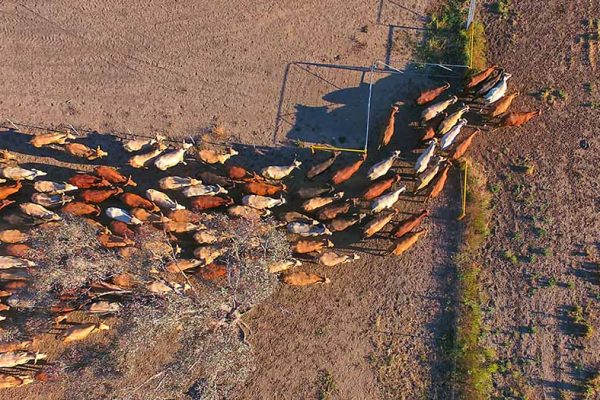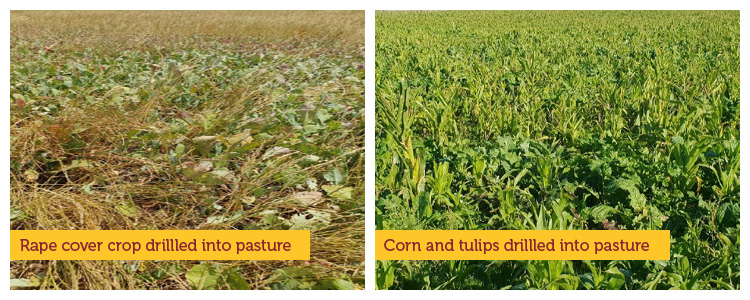Making the most of summer
The summer of 2021-2022 looks like being the third in a row where we are dominated by the presence of La Nina. What that means for your individual farm in practice is any-ones guess but La Nina usually means a far higher chance of summer rain than El Nino. That is fantastic news for grazing properties regardless of whether they are dryland or irrigated.
Yet, as with any other life event, to gain the full benefit of a moister summer certain things will need consideration. Some farmers through inaction might reap only 20% of the benefit but their neighbors down the road with a comprehensive plan might reap 80% of the benefit. Below is a list of a few things to consider going into summer.
Pastures
- We have seen in previous years over numerous studies, that some pasture plants respond very effectively to summer rain but others only mildly. A rape, millet, corn, turnips or sorghum can all produce one ton of dry matter from 25 mm of rain but perennial ryegrass needs 100mm for the same effect. We can exploit this by planting high water efficiency summer crops into living, but dormant perennial pastures, to gain additional growth over summer and autumn while your rye grass is in hibernation.
- A rape and millet crop drilled into a living pasture in late December or early January turns summer storms into growth without fear of over competition from competing perennial pastures. Once established a millet crop persists through to early winter and a rape crop persists until late winter growing happily with your perennial pasture. Try it. Its’ cheap, easy and reliable.
- This technique is called “Cover Cropping”. To the eye, it looks like a dogs’ dinner, as the pictures below illustrate. Do not let that worry you. The reason why it looks so unsightly is that by planting a cover crop and allowing it time to grow, you are also giving your perennial pasture a chance to grow and set viable seeds for next season. This can be the cheapest form of pasture renovation you will ever see.
- Apart from extra growth, other advantages are a cover crop protects existing pastures from over grazing. They provide shade for both the soil and perennial pasture protecting them from the hot sun. That canopy cover reduces both wind erosion and water evaporation. The roots hold the soil together while feeding sugars to the microbial biome, helping capture and store carbon.
Conserved Forage
- Test your forage. The energy and protein results are important, but the N.D.F. fibre is the most important. N.D.F. is a type of test conducted on fibre (neutral detergent test). N.D.F. is a direct measure of how much and animal can eat and an indirect measure of digestibility as such. Usually if fibre is high then quality is low.
- If the N.D.F. of forage is high, then they cannot eat much of it before they are full, and if it is high, they are full of poor quality feed. That means less mouthfuls per day and less nutrients per mouthful as a result. The final picture with high fibre diets is poor milk production and or poor growth.
- Sheep lambs, cows, steers and calves all crave a total diet of 30-35% N.D.F. If your forage is 60% N.D.F. then you need to find something significantly less than 20% N.D.F. to balance the average to 30-35%. Maximum intake and performance relies on this. Mathematically it takes 2.0 kg of 20.0% N.D.F. grain or summer crop to bring 1.0 kg of 60% N.D.F. forage back to an average of 33.3%. That is something to keep you awake at night.
- Knowing the N.D.F. of the fibre allows for you to make a calculated decision on how much concentrated feed (low fibre) is required to dilute the overall fibre back to 35% average. We just saw that a 2:1 ratio of concentrates are required to balance 60% N.D.F. forage. It is only a 1:1 ratio of concentrate to forage if the N.D.F. is 50% to achieve this. If this all sounds a bit confusing you Reid Stock feed rep can explain it to you.
- The illustration below shows the importance well. The cows’ rumen wants to digest cellulose and hemicellulose but so do competing insects. Like jewels in a combination safe plant cells use indigestible lignin to protect the goodies within. As the plant matures, the protective lignin gets thicker and reduces the percentage of good-stuff inside the cell.
- The cow needs a minimum quantity of cellulose and hemicellulose each day to produce a certain quantity of milk. It might seem logical that if each blade of forage has less good stuff per mouthful, then the solution is to feed more mouthfuls each day to make up the difference. This where N.D.F. becomes important. Take a second look at the illustration below. The lignin protecting the good stuff has risen from 10% to 60% so there is even more armor plating protecting the goodies. This means the cow can only eat less grass and not more. In truth if you want to keep a steady supply of nutrients up to the animals, the only feasible way do it is to replace those nutrients from somewhere else. That is where processed grains and summer crops become indispensable.
Grain/Pellets
- Apart from diluting excess fibre in a forage as just explained above we must always remember the energy and protein in a seed is different to that found in a leaf. The energy source in leaves is mostly sugar whereas the main energy type in seeds (grain) is starch. Animals do best when offered a mixture of both.
- High performance ruminants of every type require what we call non-fibre carbohydrates (N.F.C.). N.F.C. is the total of sugars and starch, which are fast and easy to digest in the rumen and feed the microbes. The correct level is about 30% of the total diet. Most conserved forage is between 5.0-15.0 sugar so no matter how much they eat of it they will never achieve 30%.
- Seeds can contain up to 60% starch. Feed testing pastures, silage or hay should tell us what percentage of the leaf is sugar and whether that percentage is high or low. Once we know this, it becomes easy to calculate how much starch needs to go into the diet to bump up the overall percentage to 30% N.F.C. per kilogram. This gives the highest efficiency of digestion.
- Obviously if the forage is low in sugar, then more starch is required to balance the ration. If there is a higher level of sugar than expected, then less starch is required. Unless you have a feed-test of your forage, it is impossible to know if you are underfeeding or overfeeding your livestock with starch.
- The consequence of underfeeding starch and sugar levels are many. Firstly, it explains underperformance of animals that seem fully fed. Secondly, if the N.F.C. of a diet is low then the digestion of everything else the animal eats will also be low. Low N.F.C. always results in poor feed conversion efficiency. Finally, animals with poor feed conversion efficiency fail to meet expected production targets, resulting in economic losses.
- Over feeding starch and sugar also presents a downside. Just because 30% N.F.C. is ideal, it does not mean that 60% N.F.C. is even better. The opposite applies. The microbes in the rumen cannot process excess sugars and starch so there is no benefit going beyond the recommended rate. In fact, too much N.F.C. leads to acidosis, lameness, impaired reproductive performance and other serious health effects. It is hard to over feed N.F.C. without buying at least some of it and it is expensive. That means in addition to all the health problems associated with excess sugar and starch, you might be paying through the nose to create these negative effects.
Have a talk to your Reids Representative. Managing the balance of nutrients in the cows’ diet is easy if you are trained to understand these things. Reids’ representatives are. However, for goodness sake make their job easier to do, by requesting some forage testing so that they have the appropriate information required to take the guesswork out of feeding your valuable animals.
A reminder of where this conversation started. In an El Nino year, there is an opportunity for every single farmer to benefit from summer rain. Some farmers will not prepare themselves for this. Other farmers will do a bit of homework and benefit greatly. If you want to be the smart farmer down the road this summer, taking full advantage of a potential wet summer would be one-step in the right direction. You are not on your own. Your Reids representative is only a phone call away ready, willing and able to help you.
Source : Karen Hoffman U.S.D.A. Natural Resources Conservation Service, Norwich New York

